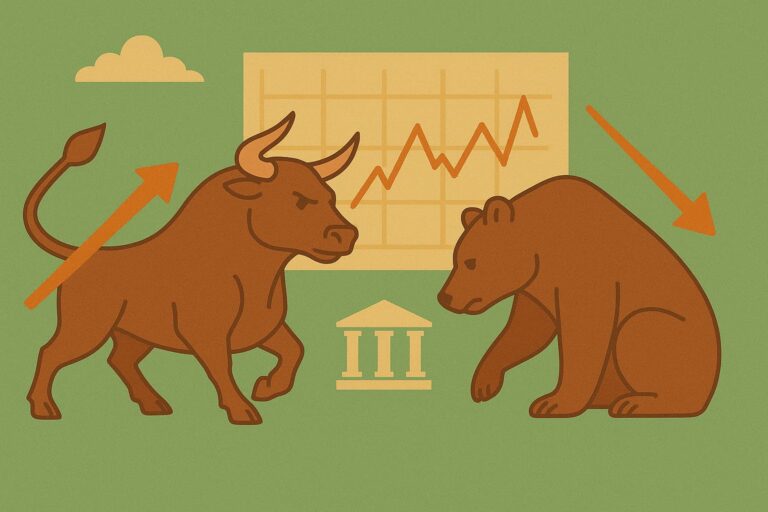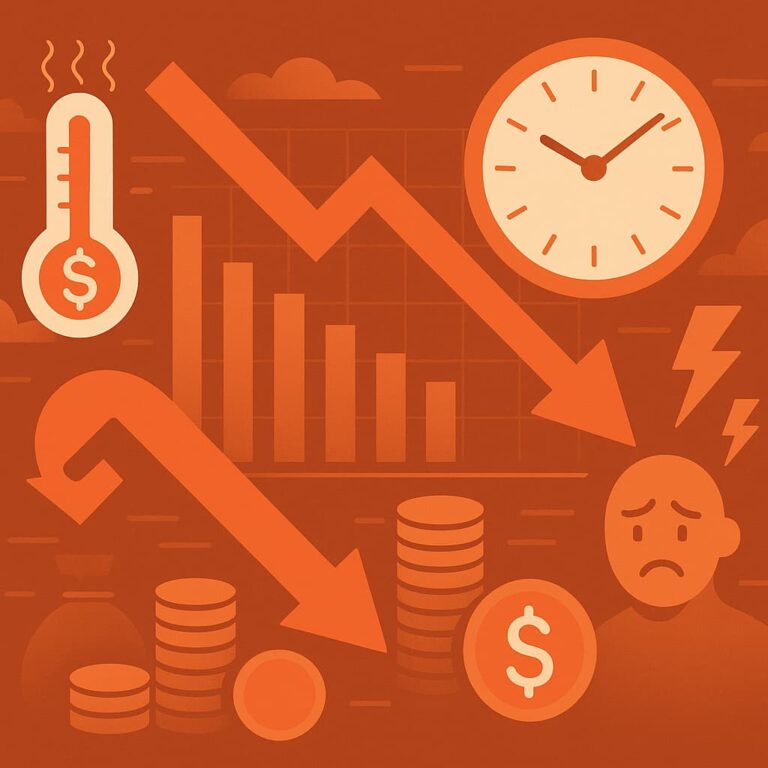Financial markets don’t move on news alone. Behind the scenes, one of the most powerful drivers of economic trends and market movements is the central bank. From interest rate decisions to monetary policy announcements, central banks hold immense influence over how money flows, how currencies behave, and how confident investors feel.
But what exactly do central banks do, and how do their actions impact stock markets, bond yields, and currencies?
In this blog post, we’ll break down the role of central banks in simple terms—and why you should pay attention to them if you’re investing, trading, or just want to understand the economy better.
What Is a Central Bank?
A central bank is a public institution that manages a country’s currency, money supply, and interest rates. It plays a key role in ensuring economic stability and growth.
Some well-known central banks include:
- The Federal Reserve (USA)
- The European Central Bank (ECB)
- The Bank of England
- The Bank of Japan
- The Reserve Bank of India
Unlike commercial banks, central banks don’t serve individuals directly. Instead, they act as a regulatory body and the banker to the government and financial institutions.
Main Functions of Central Banks
1. Controlling Inflation
Central banks aim to keep inflation at a stable level—typically around 2% annually. Too much inflation erodes purchasing power; too little can signal weak demand and economic stagnation.
They control inflation primarily through interest rates (explained below).
2. Setting Interest Rates
Interest rates are perhaps the most visible tool central banks use. When a central bank raises or lowers its key rate (such as the Federal Funds Rate in the US), it directly affects:
- Loan and mortgage rates
- Credit card interest
- Business borrowing costs
- Currency value
- Stock and bond markets
3. Managing Money Supply (Monetary Policy)
Central banks can inject or withdraw money from the economy using monetary policy tools, such as:
- Open Market Operations (buying or selling government bonds)
- Quantitative Easing (creating money to purchase financial assets)
- Reserve Requirements (setting how much banks must hold in reserve)
4. Stabilizing the Financial System
During financial crises or recessions, central banks act as a lender of last resort, helping stabilize banks and inject confidence into markets.
Example: In 2008 and during the COVID-19 pandemic, central banks provided emergency liquidity and cut rates to near-zero levels to support economies.
How Central Banks Affect Financial Markets
Let’s explore how central bank actions impact specific parts of the market:
1. Stock Markets
When central banks lower interest rates, borrowing becomes cheaper for companies and consumers. This can boost business profits and consumer spending—factors that often lead to rising stock prices.
Conversely, when interest rates rise, borrowing becomes expensive, consumer spending may drop, and investors might shift to safer investments like bonds—often causing stock prices to fall.
Key Insight:
Markets often react before changes happen, based on expectations and central bank statements.
2. Bond Markets
Bonds are extremely sensitive to interest rate changes:
- Falling interest rates → bond prices rise
- Rising interest rates → bond prices fall
This is because existing bonds with fixed rates become more or less attractive depending on the current rate environment.
Example: If the Fed hints at raising rates, bond investors may sell long-term bonds, anticipating a drop in value.
3. Currency Markets (Forex)
Central bank policy is a major driver of currency strength:
- Higher interest rates tend to attract foreign investment, strengthening the currency.
- Lower interest rates can weaken a currency due to reduced foreign demand.
Example: If the European Central Bank cuts rates while the Fed holds steady, the euro may weaken against the US dollar.
Tools Central Banks Use to Influence Markets
Here are the main tools central banks use to control market movements and economic growth:
🔹 Interest Rate Policy
This is the go-to tool. By raising or lowering the benchmark interest rate, central banks control the cost of borrowing.
- Rate hike: Used to cool down an overheated economy or control inflation.
- Rate cut: Used to stimulate growth during recessions or slowdowns.
🔹 Quantitative Easing (QE)
Central banks buy large amounts of financial assets, like government bonds, to inject money into the economy and push down long-term interest rates.
QE is often used during economic crises, such as after the 2008 financial crash or during COVID-19.
🔹 Forward Guidance
This is when central banks communicate their future plans clearly to guide market expectations. A simple statement from the Fed Chair or ECB President can move markets significantly.
Example: “We anticipate keeping rates near zero through 2025” can boost market confidence.
🔹 Currency Intervention
Some central banks buy or sell their own currency in the forex market to influence exchange rates—especially in export-driven economies like Japan or China.
Real-World Examples
🏦 The Federal Reserve and 2008 Crisis
The U.S. Federal Reserve slashed interest rates and introduced QE to stabilize the housing market and prevent bank failures. Stock markets eventually rebounded and experienced a decade-long bull run.
🏦 ECB and the Eurozone Debt Crisis
The European Central Bank played a critical role by buying government bonds from struggling countries like Greece and Italy, keeping borrowing costs down and restoring investor confidence.
🏦 Central Banks in 2020–2022
During COVID-19, nearly all major central banks cut rates and introduced stimulus programs. These actions kept markets afloat even as economies shut down.
How Investors Should Respond
Understanding central bank policy can help investors make smarter decisions:
- Watch central bank meetings: The Fed, ECB, and others hold regular policy meetings.
- Monitor inflation data: Central banks respond to inflation and unemployment metrics.
- Diversify: Interest rate moves affect different asset classes in different ways.
Pro tip: Use tools like the economic calendar and follow statements from central bank leaders (like Jerome Powell or Christine Lagarde).
Final Thoughts: Central Banks Are Market Movers
Central banks aren’t just background players—they’re some of the most influential actors in the global economy. Their decisions ripple through stocks, bonds, currencies, and even cryptocurrencies.
Whether you’re an investor, trader, or just curious about how money flows in modern economies, understanding how central banks work gives you a strategic advantage.
As you continue your financial journey, pay attention to central ban





